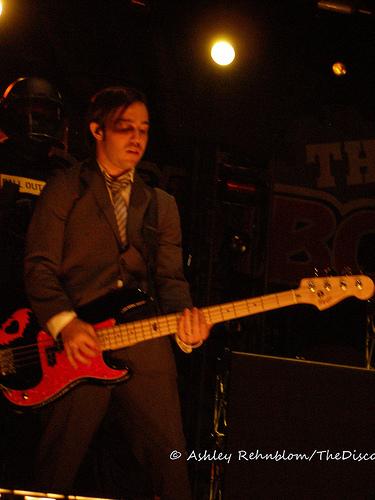
The life cycle of a punk rock band has almost become a cliché: a talented group of kids shows up on the scene with some catchy material. They build up an underground audience, play some modest venues, and BOOM! Record companies come calling. The band goes gold (and sometimes even platinum), headlines sold-out shows, and tours nonstop.
Then comes the second album. Here, many bands fizzle out and are dropped from the label. For those bands that can achieve success a second time, the cycle continues for as long as the band remains on the same page.
But then comes the drug addiction. Or the egomaniac. Or the death. Or the creative differences. And it all comes crashing down. The band goes on hiatus to renew their creative spark. Or breaks up for good. It’s a rite of passage for a punk rock band, one which only the best can overcome.
Until recently (like, until three weeks ago), the greatest example of a band coming back from the dreaded hiatus was Blink-182. Formed in 1992 by Tom DeLonge and Mark Hoppus, the band hit the big time in 1999 with the release of Enema of the State. Fast forward to February 2005, and the band went on hiatus due to the lack of camaraderie of DeLonge, Hoppus, and drummer Travis Barker.
For four years, the three threw themselves into side projects Angels & Airwaves and +44. And then, on the Grammy stage in early 2009, they announced that they were getting back together. Since then, the band released Neighborhoods in 2011 and Dogs Eating Dogs- EP in 2012, making pop-punk fans very happy.
But an announcement came last week that could trump even Blink-182 as the greatest millennial band to make a comeback: Fall Out Boy is back. The similarities between the two bands’ journeys are very similar. Time to take a look at Fall Out Boy’s journey.
Begun in 2001 by Pete Wentz and Joe Trohman, the band played around with lineups before settling on Andy Hurley and Patrick Stump. In 2003, they released their first full-length album, Take This To Your Grave, and quickly gained a following (steps one and two, check). They were signed to Island Records soon after (step three), toured like crazy, playing 280 shows a year (step four), and then began working on their follow-up album, From Under The Cork Tree (step five).
It was this album that helped the band really take off in the mainstream music industry, with singles “Dance, Dance” and “Sugar, We’re Going Down” earning significant airplay. After another set of tours, Fall Out Boy went back to the studio to record their third album, Infinity on High. Singles “This Ain’t A Scene, It’s An Arms Race” and “Thnks Fr Th Mmrs” hooked new listeners over the radio, and the band became even more popular.
Just one year later, the band released 2008’s Folie à Deux, which would become the final full-length original record the band would record in the 2000s. Then came the “indefinite hiatus.” Bassist Pete Wentz called it a way for the band to “decompress,” because they had been doing music nonstop for eight years.
That was 2009. Now, it’s 2013, and the band reunited three weeks ago on a dimly-lit Chicago stage to play their first show in the new decade. Among the performances was a new single, “My Songs Know What You Did in the Dark,” a rock anthem rooted with an almost hip-hop beat and all the clever lyrics fans of Fall Out Boy have come to revere.
In addition, lead vocalist Patrick Stump announced a new album, entitled Save Rock And Roll, to be released this May to coincide with the tenth anniversary of Take This To Your Grave.
If Blink-182’s comeback is any indication, Fall Out Boy will pick up where they left off, crafting catchy hooks that cater to their fans’ expectations while picking up a new generation of followers at the same time.

